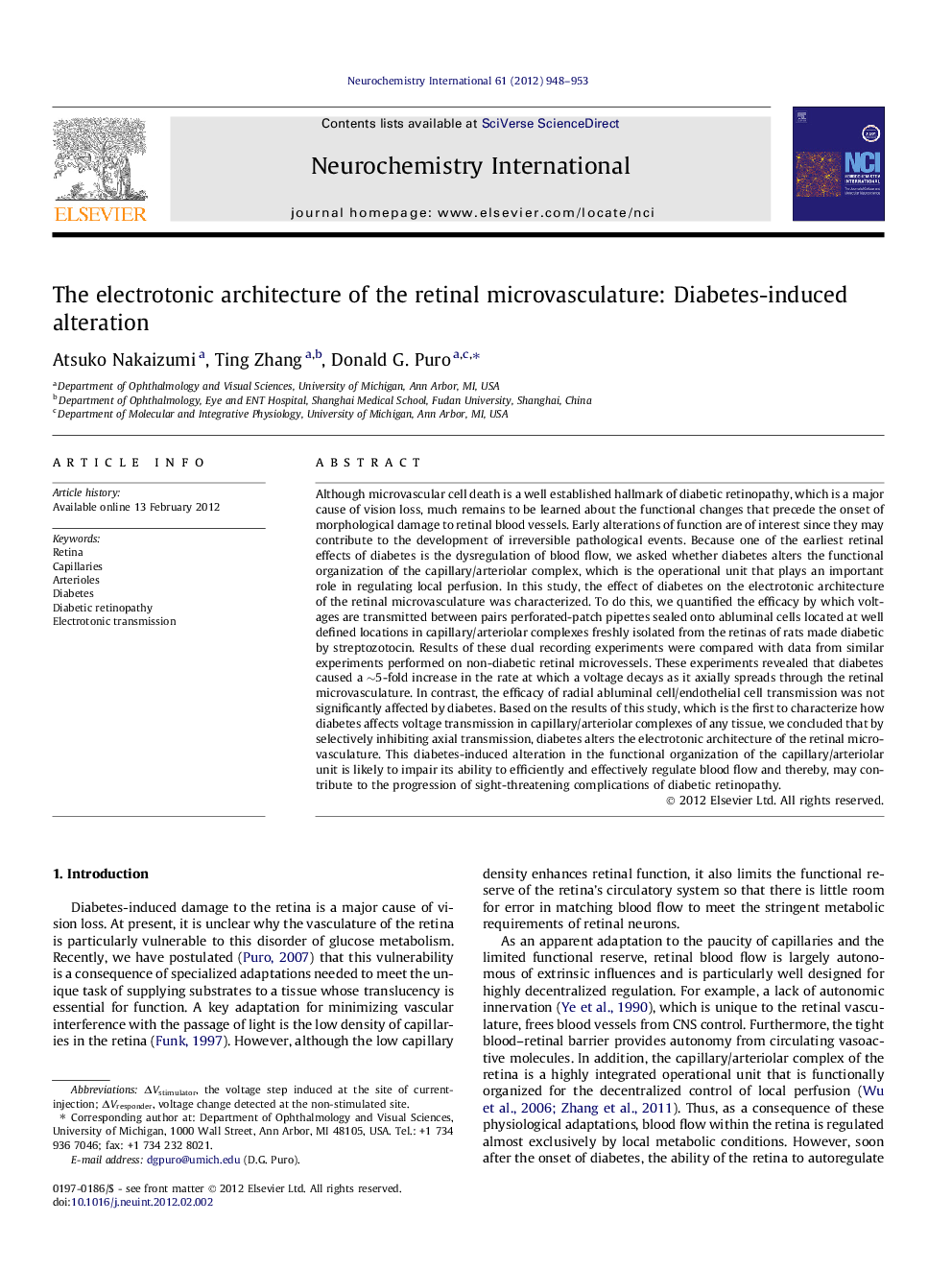| Article ID | Journal | Published Year | Pages | File Type |
|---|---|---|---|---|
| 2200839 | Neurochemistry International | 2012 | 6 Pages |
Although microvascular cell death is a well established hallmark of diabetic retinopathy, which is a major cause of vision loss, much remains to be learned about the functional changes that precede the onset of morphological damage to retinal blood vessels. Early alterations of function are of interest since they may contribute to the development of irreversible pathological events. Because one of the earliest retinal effects of diabetes is the dysregulation of blood flow, we asked whether diabetes alters the functional organization of the capillary/arteriolar complex, which is the operational unit that plays an important role in regulating local perfusion. In this study, the effect of diabetes on the electrotonic architecture of the retinal microvasculature was characterized. To do this, we quantified the efficacy by which voltages are transmitted between pairs perforated-patch pipettes sealed onto abluminal cells located at well defined locations in capillary/arteriolar complexes freshly isolated from the retinas of rats made diabetic by streptozotocin. Results of these dual recording experiments were compared with data from similar experiments performed on non-diabetic retinal microvessels. These experiments revealed that diabetes caused a ∼5-fold increase in the rate at which a voltage decays as it axially spreads through the retinal microvasculature. In contrast, the efficacy of radial abluminal cell/endothelial cell transmission was not significantly affected by diabetes. Based on the results of this study, which is the first to characterize how diabetes affects voltage transmission in capillary/arteriolar complexes of any tissue, we concluded that by selectively inhibiting axial transmission, diabetes alters the electrotonic architecture of the retinal microvasculature. This diabetes-induced alteration in the functional organization of the capillary/arteriolar unit is likely to impair its ability to efficiently and effectively regulate blood flow and thereby, may contribute to the progression of sight-threatening complications of diabetic retinopathy.
► We characterized the electronic architecture of the rat retinal microvasculature. ► Dual perforated-patch recordings were used to quantify the transmission of voltage. ► In diabetic microvessels, the rate of voltage decay was increased 5-fold. ► Diabetes decreases electronic transmission in the retinal microvasculature. ► This functional change may play a role in the progression of diabetic retinopathy.
